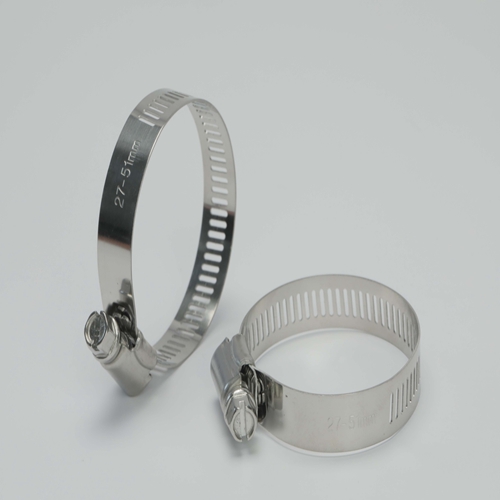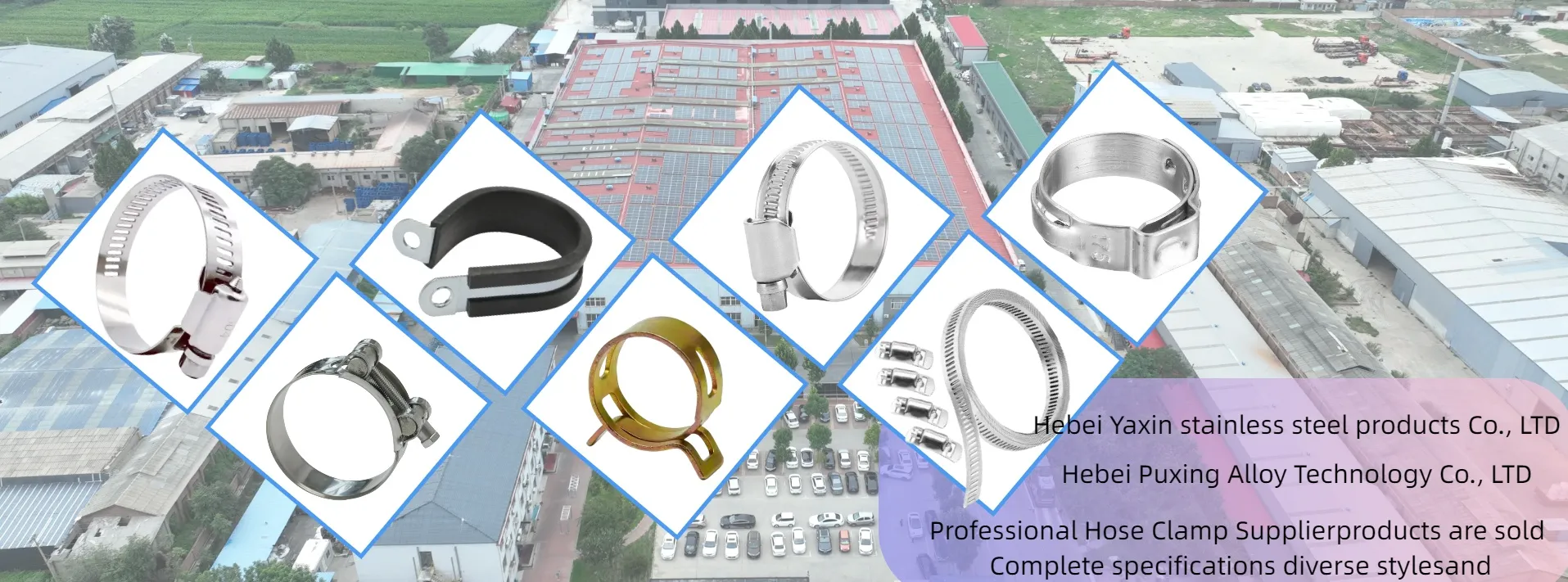- Phone:+86-17331948172 +86-0319-8862898
- E-mail: inquiry@puxingclamp.com
Nov . 15, 2024 05:40 Back to list
worm gear band roll hose clamps
Understanding Worm Gear Band Roll Hose Clamps
Worm gear band roll hose clamps are essential components in various industrial and automotive applications. Designed to provide a secure and adjustable grip, these clamps are pivotal in ensuring that hoses remain firmly in place, preventing leaks and maintaining optimal performance in diverse systems. This article will explore the structure, applications, advantages, and maintenance of worm gear band roll hose clamps.
Structure and Design
Worm gear band roll hose clamps consist of several key components that contribute to their functionality. The primary parts include a band, a housing, a screw, and a worm gear mechanism. The band, often made from stainless steel or other durable materials, wraps around the hose to secure it in place. The housing holds the screw and worm gear, which allows for adjustment and tightening of the band.
When the screw is turned, the worm gear engages, causing the band to cinch tighter around the hose. This design not only provides a strong grip but also allows for micro-adjustments, making it versatile for hoses of different diameters. The ability to easily adjust the pressure enables users to find the optimal fit without damaging the hose material.
Applications
Worm gear band roll hose clamps are widely used across various industries. They are commonly found in automotive applications, such as securing radiator hoses, fuel lines, and air conditioning lines. In the HVAC industry, these clamps are crucial for connecting ductwork and flexible hoses that transport air, ensuring that systems operate efficiently without leaks.
In the agricultural sector, worm gear clamps are employed to secure irrigation hoses and other tubing that transport water or nutrients. Their robustness and reliability make them suitable for outdoor use, where exposure to the elements can cause other fastening solutions to fail.
Additionally, these clamps are prevalent in marine applications, securing hoses in environments where saltwater and abrasion present significant challenges. Their ability to resist corrosion is vital for maintaining long-term functionality in such settings.
Advantages
worm gear band roll hose clamps

One of the primary benefits of worm gear band roll hose clamps is their ease of use. The simple mechanism allows for quick installation and adjustment, saving time and effort during maintenance or initial setup. Their durable construction ensures longevity, even in harsh environments, which translates to reduced replacement costs over time.
Moreover, these clamps offer a consistent hold, which minimizes the risk of hose blowouts under pressure. This feature is particularly important in high-pressure systems, where failure can lead to significant downtime or safety hazards.
Maintenance Tips
While worm gear band roll hose clamps are known for their durability, regular maintenance can help prolong their life and ensure optimal performance. Here are some tips for maintaining these clamps
1. Regular Inspection Check the clamps periodically for signs of wear or corrosion. If you notice any damage, replace the clamp immediately.
2. Tightness Check Ensure that the clamps remain tight over time, as vibrations and environmental changes can cause them to loosen.
3. Appropriate Tool Use Use the correct tools for adjustment to avoid stripping the screw or damaging the worm gear mechanism.
4. Cleaning Clean the clamps of any debris or residue that might affect their operation. A clean clamp provides better grip and ensures that the hose remains secure.
In conclusion, worm gear band roll hose clamps are indispensable tools in various applications, providing reliability and safety in securing hoses. Their simple design, ease of use, and adaptability make them a favored choice across multiple industries. By understanding their structure and maintaining them effectively, users can ensure optimal performance and extend the lifespan of their hose connections.
-
Large Stainless Steel Adjustable American Type Hose Clamp-Hebei Pux Alloy Technology Co., Ltd.|Corrosion Resistance,High Torque
NewsAug.17,2025
-
Large Stainless Steel Adjustable American Type Hose Clamp - Hebei Pux Alloy Technology Co., Ltd | Corrosion Resistant High Torque Adjustable
NewsAug.17,2025
-
Large Stainless Steel Adjustable American Type Hose Clamp - Hebei Pux Alloy Technology Co., Ltd.
NewsAug.17,2025
-
Durable Stainless Steel Hose Clips & Clamps for Secure Fittings
NewsAug.17,2025
-
Large Stainless Steel Adjustable American Type Hose Clamp - Hebei Pux Alloy Technology Co., Ltd
NewsAug.17,2025
-
Large Stainless Steel Adjustable American Type Hose Clamp - Hebei Pux Alloy Technology Co., Ltd
NewsAug.16,2025




